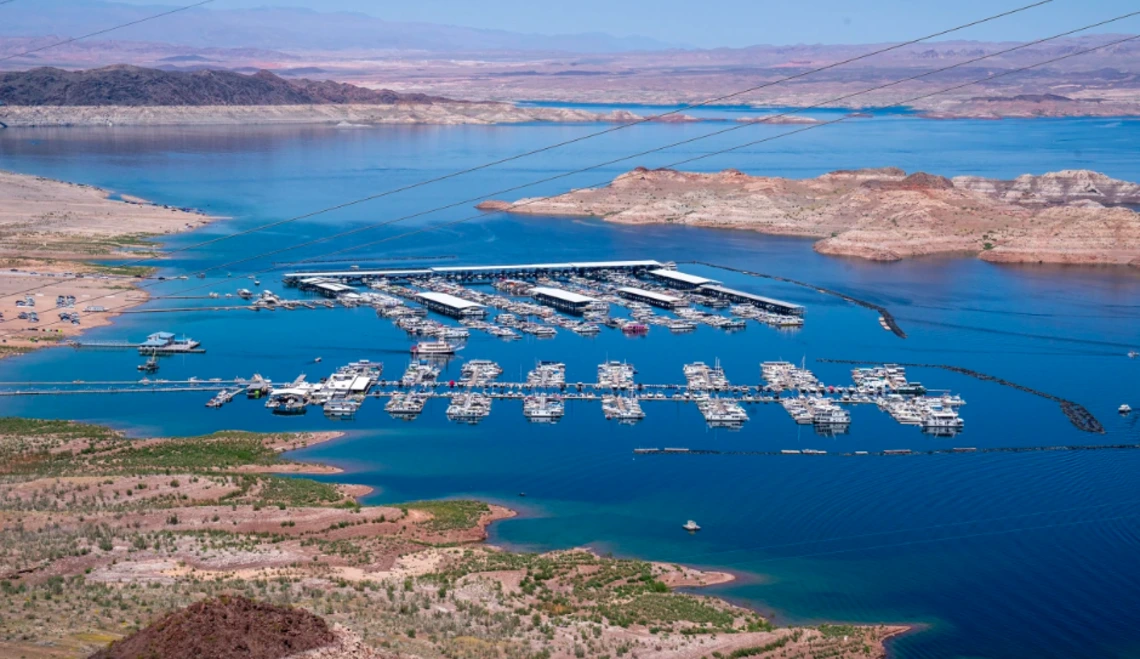Three states agree to reduce water usage so the Colorado River doesn’t go dry
A new plan would conserve at least 3 million acre-feet of water by 2026 in an effort to ensure the crucial waterway continues to generate power and provide drinking water.

Boats docked along the shores of the Colorado River forming Lake Mead in Boulder City, Nev., in April.
Robert Nickelsberg / Getty Images
The seven states that rely on the Colorado River for power and drinking water have reached a deal on cuts to keep the drought-stricken river flowing.
Three states — Arizona, California and Nevada — have agreed on a plan to conserve at least 3 million acre-feet of water by 2026 — roughly the equivalent to the amount of water it would take to fill 6 million Olympic-sized swimming pools.
The Biden administration, which helped broker the agreement, announced the consensus deal Monday in a news release.
The seven states that rely upon the Colorado River were on the precipice of crisis after decades of overuse. Before a banner winter of snowfall, officials grew concerned as dams at Lake Mead and Lake Powell neared “dead pool” status — when flow would be cut off to lower regions of the river as water levels dropped too low to pass through the dams.
About 40 million people rely on the Colorado River for drinking water. Utilities depend on it to generate electricity at dams on Lake Mead and Lake Powell and keep power flowing in several states.
The deal could avert the near-term crisis and put the states on a more sustainable trajectory for water use, but it calls for less conservation than some scientists say is required to stabilize the river after a more than two-decade drought. The deal prevents a political predicament for the Biden administration, which would have been compelled to enforce cuts unilaterally if the states could not negotiate an agreement among themselves.
Interior Secretary Deb Haaland said in the release that the announcement was “a testament to the Biden-Harris administration’s commitment to working with states, Tribes and communities throughout the West to find consensus solutions in the face of climate change and sustained drought.”
Once analyzed and officially approved by the Bureau of Reclamation, which operates the dams on Lake Mead and Lake Powell, the new agreement would be in place through 2026.
“This is a big deal,” said Robert Glennon, a professor emeritus at the University of Arizona who specializes in water law and policy, adding that the problems states faced were “truly historic and potentially catastrophic if either Lake Powell or Lake Mead hit dead pool.”
